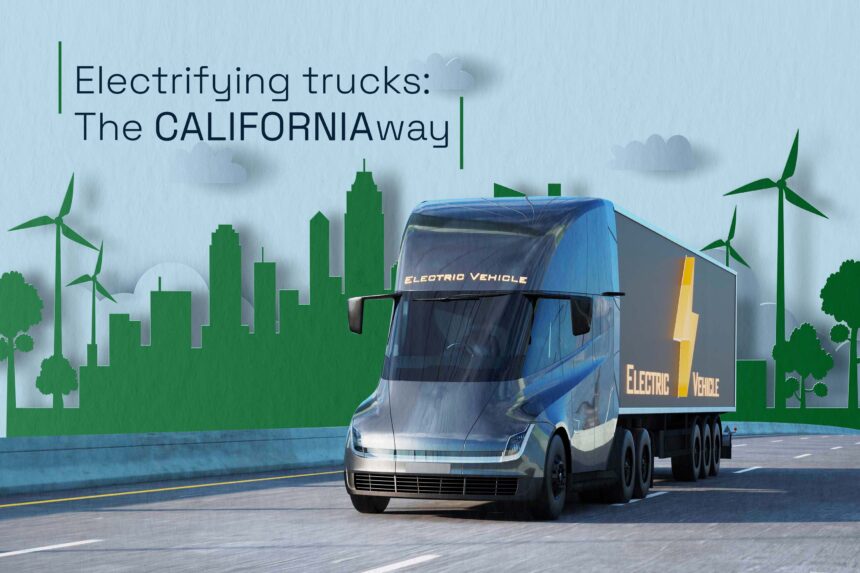What is an electric truck?
An electric truck is a battery-operated electric vehicle intended to deliver goods, carry specific payloads, or carry out other practical tasks.
For more than a century, lead-acid batteries have powered electric trucks in specialised uses like milk floats, pushback tugs, and forklifts. However, the rapid development of lighter, more energy-dense battery chemistries in the twenty-first century has expanded the variety of uses for electric propulsion to trucks in many more roles.
Comparatively speaking to gasoline-powered cars, electric trucks produce less noise and pollution. The cost of maintaining and operating electric trucks is significantly cheaper than that of their predecessors due to the great efficiency and low component counts of electricity generation trains, the lack of fuel combustion when idling, and the quiet and effective acceleration.
What are the specifications?
The average cost per kWh capacity of battery packs for trucks decreased from $500 in 2013 to $200 in 2019, and even more to $137 in 2020, with certain vehicles reaching under $100 for the first time, according to the United States Department of Energy.
Long-distance freight has historically been the transportation sector least suited to electrification because of the reduced payload capacity of batteries relative to fuel and the equivalent, more frequent recharging, which increases delivery time. The clean and quiet essence of electric trucks, on the other hand, fits well with urban planning and city and county regulations, and the capabilities of reasonably-sized batteries are well-suited to daily stop-and-go traffic within a metro region. As a result, short-haul urban delivery has been quickly energised.
Where does California stand?
Trucks have always played a massive role in economics, and transportation. They cover the country in their forty million numbers, transporting around 75% of the freight. They produce 32% of the nation’s nitrogen oxides, or NOx, a major cause of air pollution, and 23% of the nation’s vehicle greenhouse gas emissions. Becoming electric would almost completely remove the NOx and greatly reduce the other pollutants.
Drayage trucks, which move container ships from ports and train yards to distribution centres, provide a sensible place to start as the US starts to decarbonize its trucking fleet. They function from concentrated areas where they could charge and travel small distances, which is easier on the batteries. The frontline villages who struggle to breathe severely contaminated air near drayage centres would undergo a radical change if they were electrified.
Why is this shift essential?
As pollution increases in the city, it is truly important to tackle the global and environmental issue that comes with it.
California has made the most extensive efforts to reduce carbon emissions drayage of any state; there, 33,500 trucks rumble into and out of ports and train yards every day. Medium and heavy-duty vehicles are responsible for one-fifth of the greenhouse gas emissions in the state.
Hight is one of around a few fleets in California that have adopted electric trucks, and as businesses scramble to meet impending zero-emissions rules, this number will only increase. Yet, critics worry that the state’s initiative to electrify the industry is proceeding too rapidly and might force small company owners out of business.
Ambitions and beyond
With the United States government focused on making 30% of the cars zero-emission, California aims for larger things. The state government is hoping to make a complete makeover to all-electric trucks in the next 12 years. To the people there, this is essential as environmental threats, fuel dependency and lack of the same make it the best decision to make.
The Advanced Clean Fleets Regulation in California is the policy that will exert the most pressure on businesses like Hight. It would mandate that all newly registered drayage trucks be zero emission starting the next year. Also, starting in 2025, all trucks with engines that are 13 years old or older must be replaced with zero-emissions vehicles once they have travelled 800,000 miles. The regulation is anticipated to be approved by the California Air Resources Board in April.
Long-haul truck electrification presents logistical difficulties, which are acknowledged by the expedited decarbonization timeframe for drayage. There are around six producers of battery-powered heavy rigs, but none have a range of more than 200 miles. For a motorist who has to travel 500 miles in a day, charging might take hours.
Expenses and factoring all changes
The costs involved are not only the high initial outlay. The cars may weigh up to 10,000 pounds heavier than their diesel equivalents because to their massive batteries. Drivers must transport less freight since national statute restricts the weight of a full truck to 80,000 pounds (electrics are given an additional 2,000 pounds). It implies lower revenue.
It could be necessary for drivers to make fewer journeys each day. The typical electric semi has a real-world range of roughly 130 miles, which is sufficient for travelling from the port to Hight’s warehouses but insufficient for travelling to Southern California’s inland regions.
LeDucq asserted that the solution will lie in the development of communications infrastructure rather than relying on fleets to make the switch on their own. A system of centralised depots that can store and refuel 50 to 150 vehicles from various fleets is what Forum is aiming to build. Workers can either drive their own car or one of Forum.







